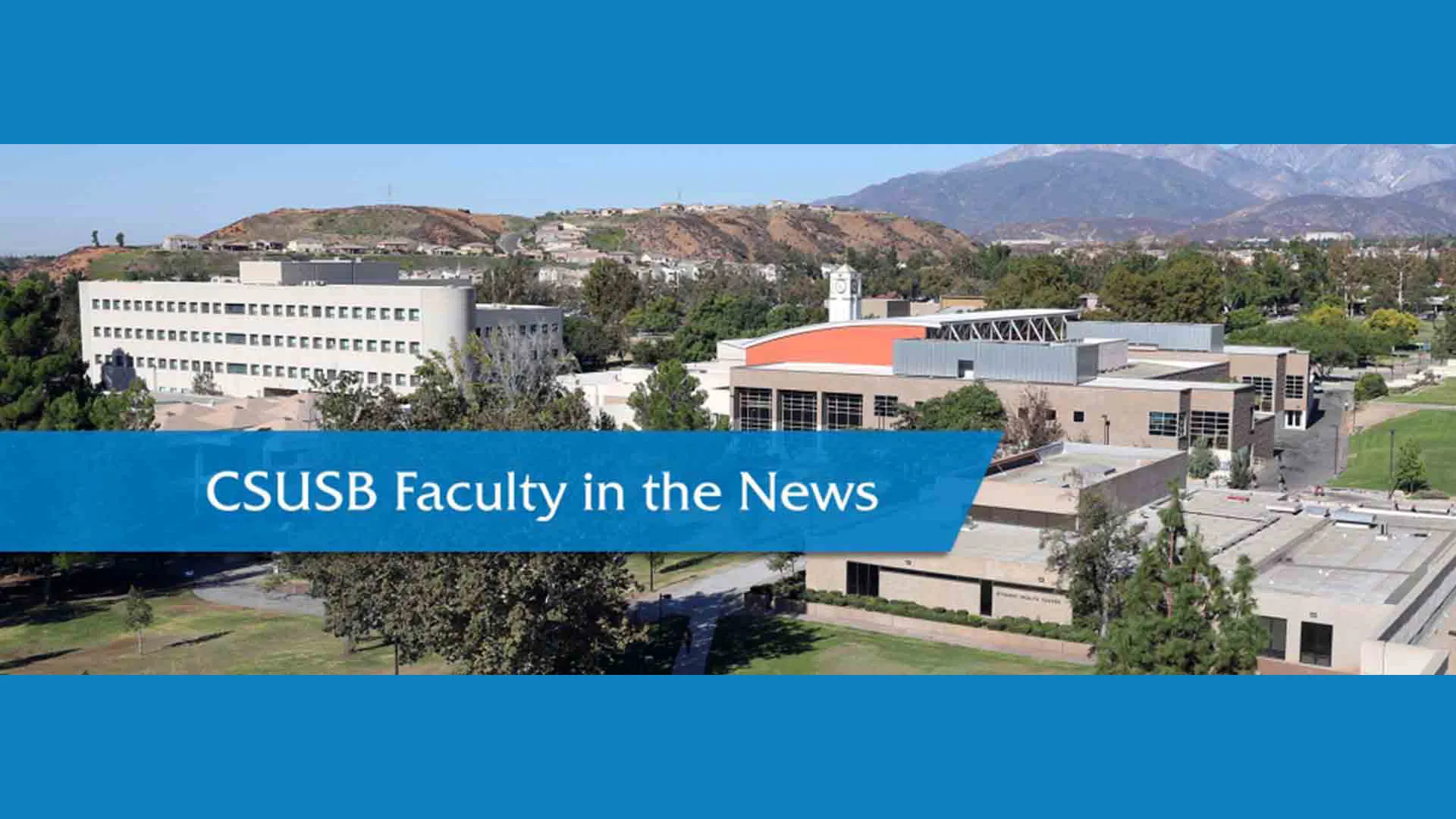NOTE: Faculty, if you are interviewed and quoted by news media, or if your work has been cited, and you have an online link to the article or video, please let us know. Contact us at news@csusb.edu.
CSUSB professor discusses the behind-the-scenes work of research, ‘Genomics of natural history collections’
Molecular Ecology
Sept. 24, 2020
The publication posted an interview with Lua Lopez, CSUSB assistant professor of biology, who discussed research she led while doing post-doctoral work at Penn State University in which she and her colleagues “compiled a broad range of studies using a variety of methods to illustrate the enormous potential of museum samples to answer question fundamental to molecular ecology,” the article states.
The abstract of the paper: “A long‐standing question in biology is how organisms change through time and space in response to their environment. This knowledge is of particular relevance to predicting how organisms might respond to future environmental changes caused by human‐induced global change.”
The researchers compiled “ a range of studies spanning from methodological aspects to particular case studies which demonstrate the enormous potential of NHC (natural history collections) samples for accessing large genomic data sets from the past to advance our knowledge on how populations and species respond to global change at multiple spatial–temporal scales. We also highlight possible limitations, recommendations and a few opportunities for future researchers aiming to study NHC genomics.”
Listed with Lopez on the paper are Kathryn G. Turner, Idaho State University; Emily S. Bellis, Arkansas State University; and post-doctoral supervisor Jesse R. Lasky, Penn State University.
Read the complete article, and view the video interview at “The story behind the Special Feature: Genomics of natural history collections.”
The research is online under the title “Genomics of natural history collections for understanding evolution in the wild.”
CSUSB professor co-authors paper, ‘Evolutionary dynamics in the Anthropocene: Life history and intensity of human contact shape antipredator responses’
PLOS Biology
Sept. 22, 2020
Breanna J. Putman, CSUSB assistant professor of biology, was listed as a co-author on a paper that suggests animals lose their fear of predators once they start encountering people regularly.
“Humans profoundly impact landscapes, ecosystems, and animal behavior. In many cases, animals living near humans become tolerant of them and reduce antipredator responses,” says the abstract of the research, published on PLOS Biology.
“We found that any contact with humans leads to a rapid reduction in mean antipredator responses as expected,” the abstract says. “Notably, the variance among individuals over time observed a short-term increase followed by a gradual decrease, significant for domesticated animals. This implies that intense human contact immediately releases animals from predation pressure and then imposes strong anthropogenic selection on traits.”
Listed with Putman on the paper were Benjamin Geffroy of the University of Montpellier in France; Bastien Sadoul, also of the University of Montpellier in France; Obed Berger-Tal, Ben-Gurion University of the Negev, Israel; László Zsolt Garamszegi, Eötvös Loránd University, Budapest, Hungary; Anders Pape Møller, Beijing Normal University, Beijing, China; and Daniel T. Blumstein, University of California, Los Angeles.
The paper can be found online at “Evolutionary dynamics in the Anthropocene: Life history and intensity of human contact shape antipredator responses.”
CSUSB professor comments on resentencing of man who plotted to burn down a mosque
Courthouse News Service
Sept. 23, 2020
A federal judge on Wednesday resentenced Robert Doggart, a Tennessee man convicted on charges surrounding a plot to burn down a New York mosque, to 120 months in prison after the Sixth Circuit Court of Appeals determined the house of worship was not involved in interstate commerce.
The former congressional candidate was charged in 2015 for soliciting others to destroy the mosque of Islamberg, New York, a small community in the Catskill Mountains near the Pennsylvania state line. Originally sentenced to 235 months on two counts in 2017, Doggart appealed to the Sixth Circuit.
Brian Levin, director at the Center for the Study of Hate and Extremism at California State University, San Bernardino, said the Sixth Circuit’s January ruling came at a time when houses of worship have been facing higher levels of risk from extremist violence.
The Sixth Circuit’s ruling in Doggart’s case was mostly a technical one, Levin said, but was narrower than how the courts decades ago looked at the commerce clause and did not consider Congress’ interest in protecting houses of worship. In the 1990s, Levin noted, the Bureau of Alcohol, Tobacco and Firearms investigated church arsons.
“This has implications also to use of arson in current political protests,” Levin said. “And I think it’s strange credulity to say that arson is merely a personal vendetta or insurance fraud crime when we’re increasingly seeing it under the auspices of conflictual political events and particularly the history we’ve had with arsons and explosives used against Black churches.”
Read the complete article at “Tennessee man who plotted to burn down a mosque resentenced.”
These news clips and others may be viewed at “In the Headlines.”
